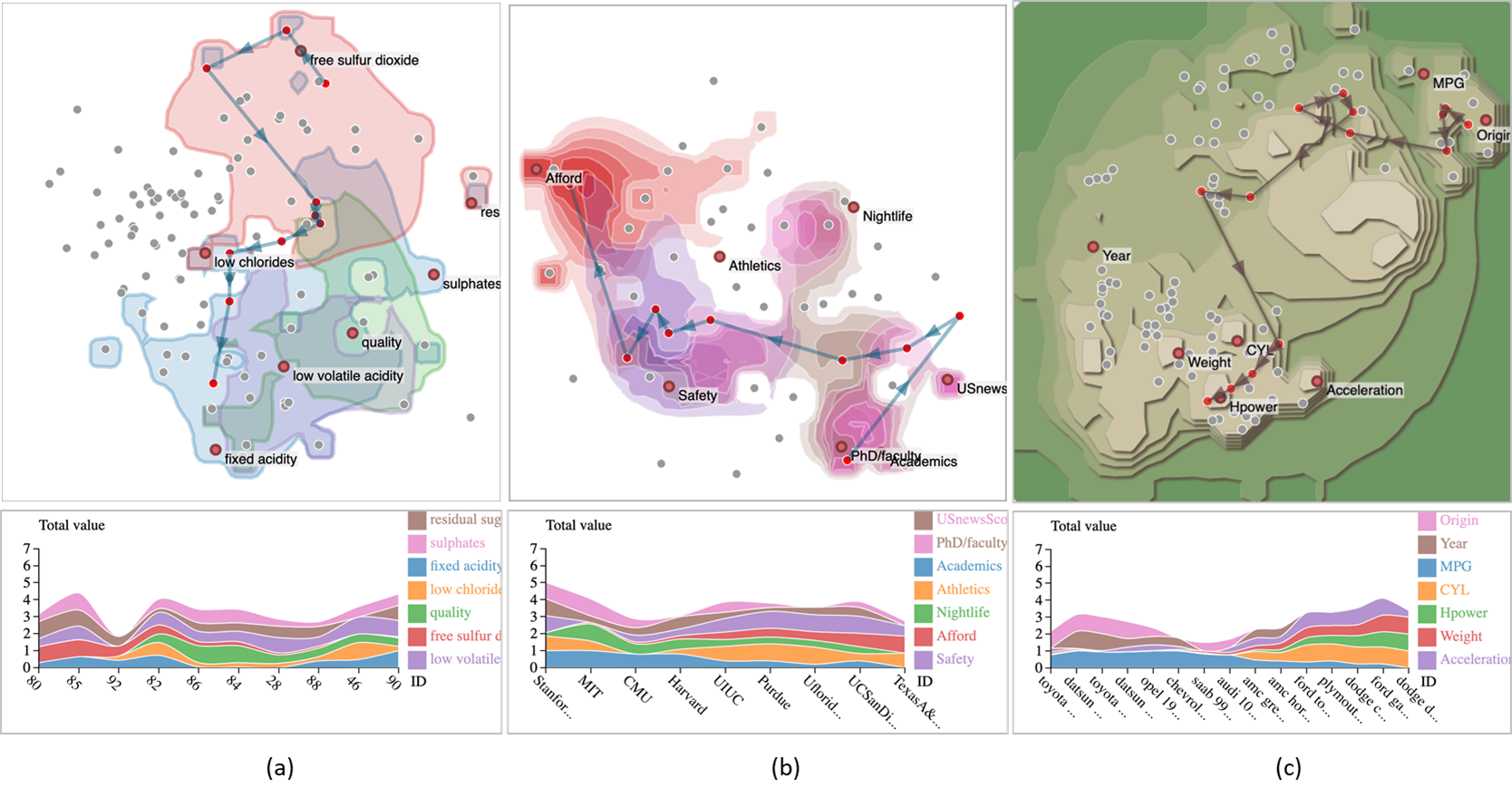Graphical Enhancements for Effective Exemplar Identification in Contextual Data Visualizations
Xinyu Zhang, Shenghui Cheng, Klaus Mueller
View presentation:2022-10-19T21:33:00ZGMT-0600Change your timezone on the schedule page
2022-10-19T21:33:00Z

Prerecorded Talk
The live footage of the talk, including the Q&A, can be viewed on the session page, Dealing with Scale, Space, and Dimension.
Fast forward
Keywords
High-dimensional data, multivariate data, contextual displays, exemplar generation, decision support, configuration space
Abstract
An exemplar is an entity that represents a desirable instance in a multi-attribute configuration space. It offers certain strengths in some of its attributes without unduly compromising the strengths in other attributes. Exemplars are frequently sought after in real life applications, such as systems engineering, investment banking, drug advisory, product marketing and many others. We study a specific method for the visualization of multi-attribute configuration spaces, the Data Context Map (DCM), for its capacity in enabling users to identify proper exemplars. The DCM produces a 2D embedding where users can view the data objects in the context of the data attributes. We ask whether certain graphical enhancements can aid users to gain a better understanding of the attribute-wise tradeoffs and so select better exemplar sets. We conducted several user studies for three different graphical designs, namely iso-contour, value-shaded topographic rendering and terrain topographic rendering, and compare these with a baseline DCM display. As a benchmark we use an exemplar set generated via Pareto optimization which has similar goals but unlike humans can operate in the native high-dimensional data space. Our study finds that the two topographic maps are statistically superior to both the iso-contour and the DCM baseline display.